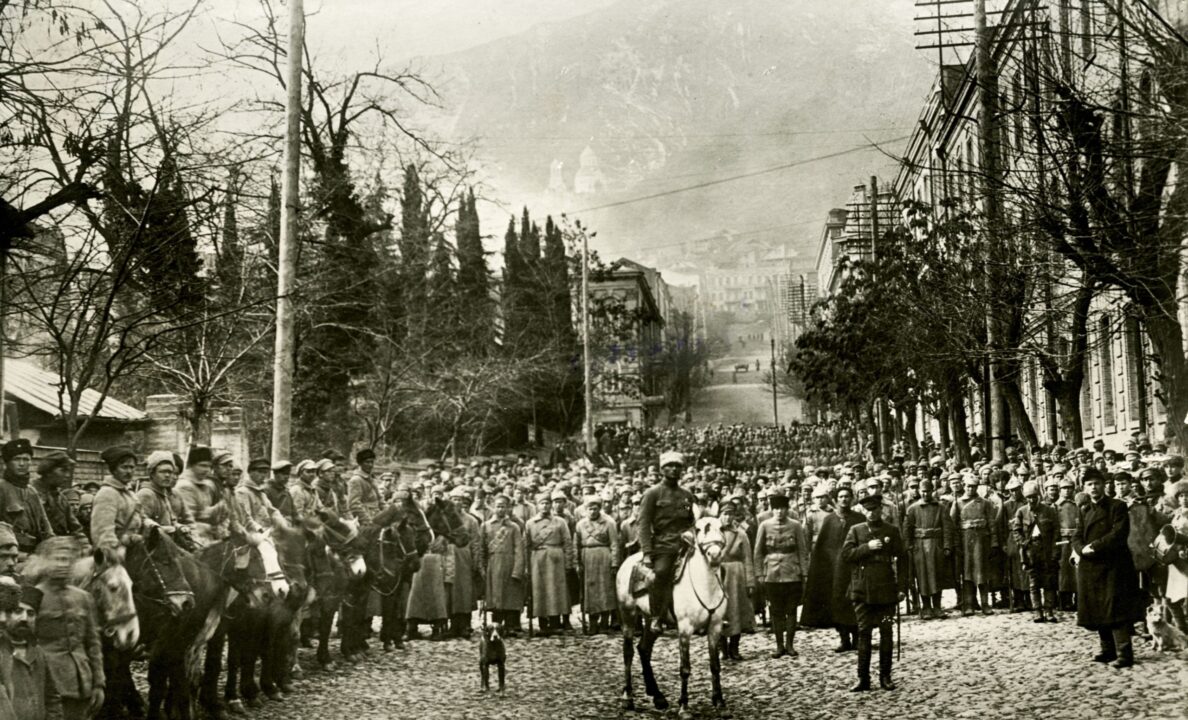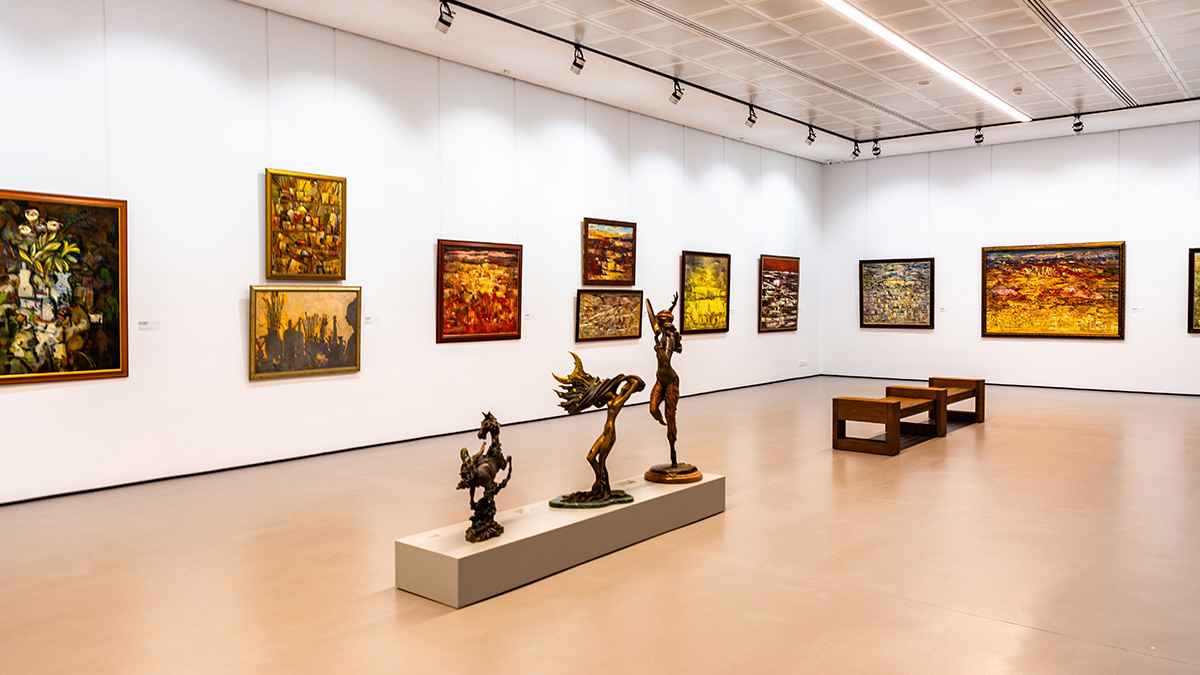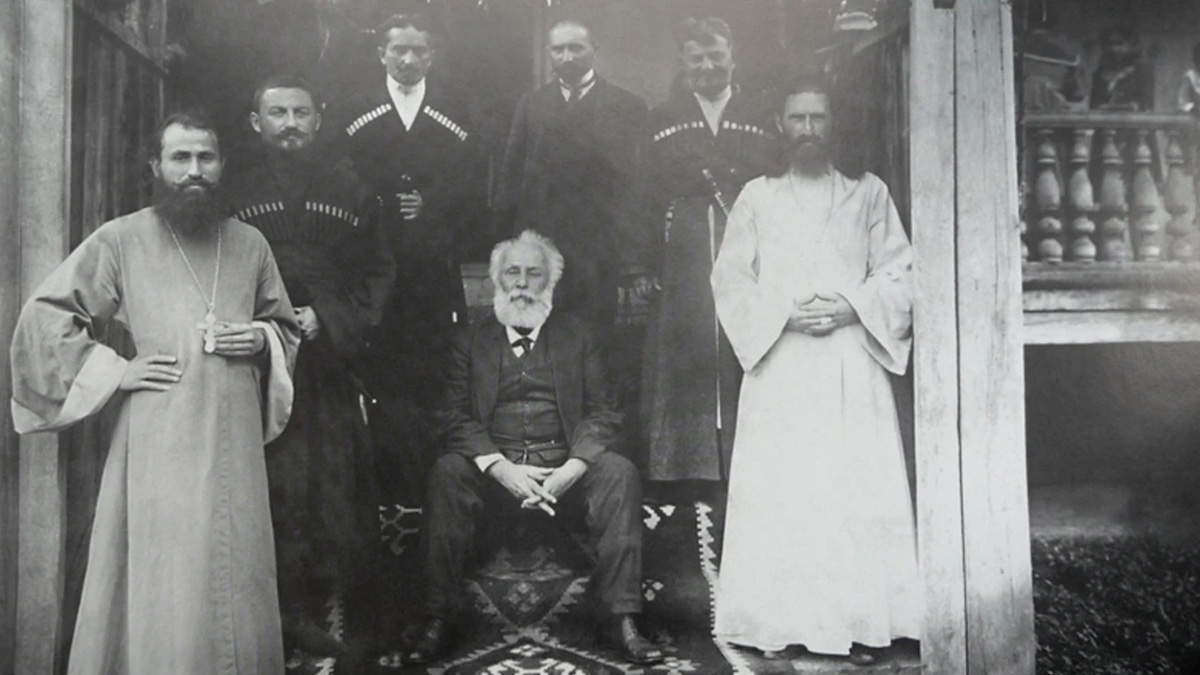Georgian History: The Occupations
The most loved person in all of Georgia is the guest that they bring into their home. Georgia has a legendary reputation for their immensely warm hospitality and openness to give freely as much as they can to any newcomer they happen to run into. They will wine and dine them until their stomach bursts and their liver ruptures all the while refusing any compensation offered. However, even in Georgia, there comes a time when a guest should pull themselves together and move on. Sadly, throughout most of their history, Georgia has had many visitors who have simply refused to leave trying to impose their own culture and lifestyles upon their gracious hosts.
It doesn’t help that Georgia is situated in a very strategic region along the Silk Road and holds many valuable natural resources including a wonderfully agreeable people, climate, and scenic beauty. For three millennia, many of the world’s major powers fought for control over the region and did this often at the expense of the people living there. This is the third instalment of a four part series on Georgian history in which we will look over the various occupations Georgia has endured.
All Good Things Must Come to an End

Photo Source: National Geographic Education
While there have been many different tribes and kingdoms within the current borders of Georgia, it was not united under a single ruler until the 1008 reign of Bagrat IV. While we could spend time looking over the various empires that came through before then, there simply isn’t enough time or room to go through them all. You can check the previous two articles on Georgia’s Prehistory and Medieval Era to get a sense of what came before. For this article, unified Georgia will be our starting point.
From 1008 to the beginning of the 1200s the Kingdom of Georgia became a large and powerful nation. It saw its height of power and influence under Queen Tamar (or “King” as Georgians would call her). Georgian dominance would be short-lived though, as in just a few decades after her death the Mongols rode in and not even the strongest of the world’s major kingdoms could hold back their advance forever.
In the 1220s the Mongols started to invade the outermost areas of Georgia’s holdings invading their territories in what are now known as Azerbaijan and Armenia. Georgi IV (sometimes called Lasha) went to his kingdom’s defence in the Battle of Khunan along with forces from his Azari governors. The battle was a disaster for King Lasha as his forces were decimated by the Mongol’s famous “feigned retreat”. A large force of Mongols would avance, fight for a while, then fallback in between two hidden flanks. The opposing force would follow them in, unaware that that a trap had been set. As they gave chase, the hidden flanks would move from the left and the right causing the advancing army to be completely swallowed up. King Lasha was shot in the chest and barely survived the battle. He became an invalid for the next two years until his death in 1223.
Queen Tamar’s daughter and sister to King Lasha took the throne. Her reign marked the beginning of the end for the Kingdom of Georgia. From 1223 on, Georgia continually felt her borders becoming more and more constricting as the Mongols and later the Kipchaks continued to harass their Armenian and Azari lands. Soon an opportunistic Persian ruler, Jelal ad-Din Mingburnu, was on the run from Genghis Khan to escape death in India. His forces came into the inner lands of Georgia and and besieged Tbilisi. Queen Rusudan was forced to abandon the capital and reinstate it in ancient Kutaisi. The city fell a year later and Mingburnu went through the city, demanding its population to convert to Islam or face immediate death. One hundred thousand martyrs are said to have died by his army’s sword and at Metekhi Bridge in what is now known as Tbilisi’s Old Town. In an oft-cited quotation from the 14th Century Georgian history The Chronicle of 100 Years:
“Words are powerless to convey the destruction that the enemy wrought: tearing infants from their mothers’ breasts, they beat their heads against the bridge, watching as their eyes dropped from their skulls.…”
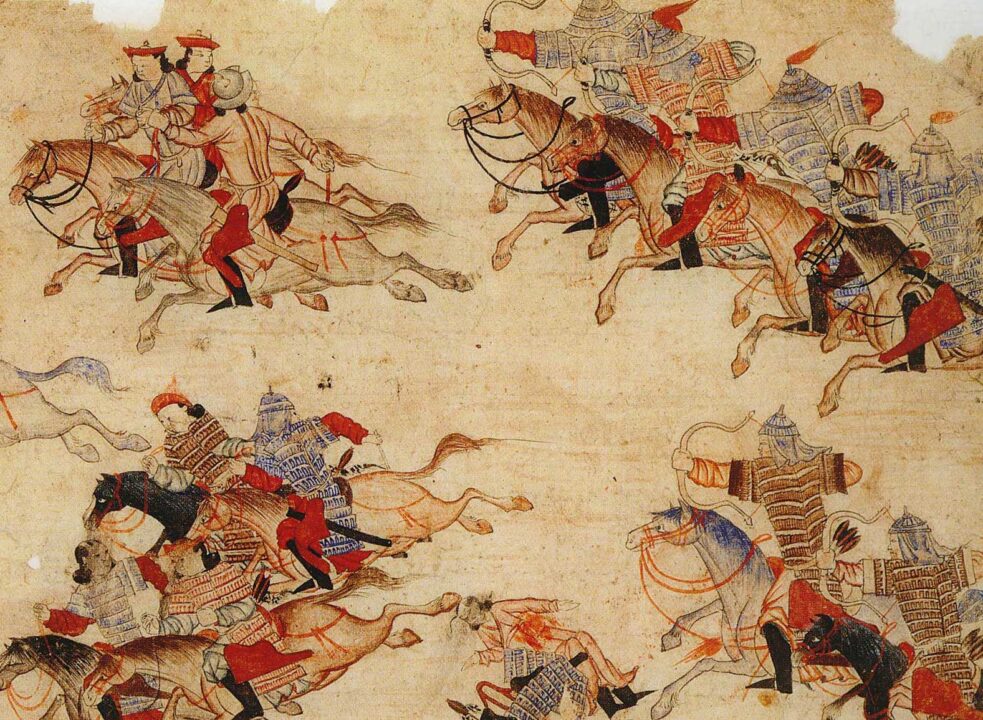
Photo Source: World History
Several attempts were made over the next few years to retake Tbilisi. Many were successful but only for a short time. When the Mongols showed up in the Georgian homeland in 1235 there were very few resources left from Georgia’s struggles with Mingburnu. They easily took Tbilisi and by 1240 the rest of the kingdom was overrun. Queen Rusudan gave up her sovereignty to the Mongols in 1242 along with agreeing to an annual tribute of 50,000 gold pieces and contingents of Georgian fighting men.
With the death of Queen Rusudan came the deathmarch of the kingdom itself. Without a strong, independant central government the various warlords and nobles were left to rule themselves. As with many times in its history, Georgia’s unification fractured once again. Sometimes it was because of petty rivals, but often it was due to Mongol agitation and meddling. Kings like Dimitri II and David VIII attempted to push back against these intrigues for nearly 50 years but ultimately failed in their mission. Strife and uncertainty were everywhere and it seemed like Saqartvelo was doomed forever.
Her second wind came in 1314 in the form of Georgi V “The Brilliant”. As his name suggests, he was a magnificent tataction and regient. During his 34 year reign lead to a short reprieve from the Mongol oppressions and saw a restoration to most of the lands initially controlled under Tamar. His success can mostly be attributed to the internal problems that were plaguing the Iranian Khanate and the pressures of the Golden Horde. He also changed his kingdom’s flag and based it off of the Jerusalem Cross which became the inspiration for Georgia’s present one. The nation’s resurgence didn’t last long as Death and Emperor Tamerlane were waiting for them at the door.
Death This Way Comes
At around 1347 an expeditionary force returned from the southwest after having fought some Turkish invaders. The soldiers brought with them a bit of accidental germ warfare known as the Bubonic Plague. This was the during the beginning of the pandemic known as The Black Death that ravaged Europe and North Africa. The plague lasted for about three years in Georgia and killed between 30 – 40% of the population.
Twenty years later Timur’s Persian Ill Khanate and the Khan Tokhtamysh’s Golden Horde to its north got into a bitter rivalry with each other. Having stabilized since the incursions with Georgia’s Giorgi V, Timur focused on beating back the Golden Horde’s invaders. With the Ill Khanate to her south and the Golden Horde to her north, Georgia was in the middle of a cross fire that would bring in 15 years of destruction and eight separate invasions.
In his first invasion in 1385 Tamurlaine handedly defeated Tbilisi and captured Bagarat V. He then brought the Georgian king to him and forced his conversion to Islam at sword point. Seeing an opportunity to take advantage of the situation, Bagarat agreed only if he could lead the jihad against Georgia and the Golden Horde himself. Timur seemed to like the idea and as he gave Bagarat about 12,000 men to take care of the rest of Georgia. Upon his return he was “ambushed” by his son, the king Giorgi VII, and Timur’s military escorts were destroyed. The Emperor had been had; fooled by the wiley Bagrat and he was livid.
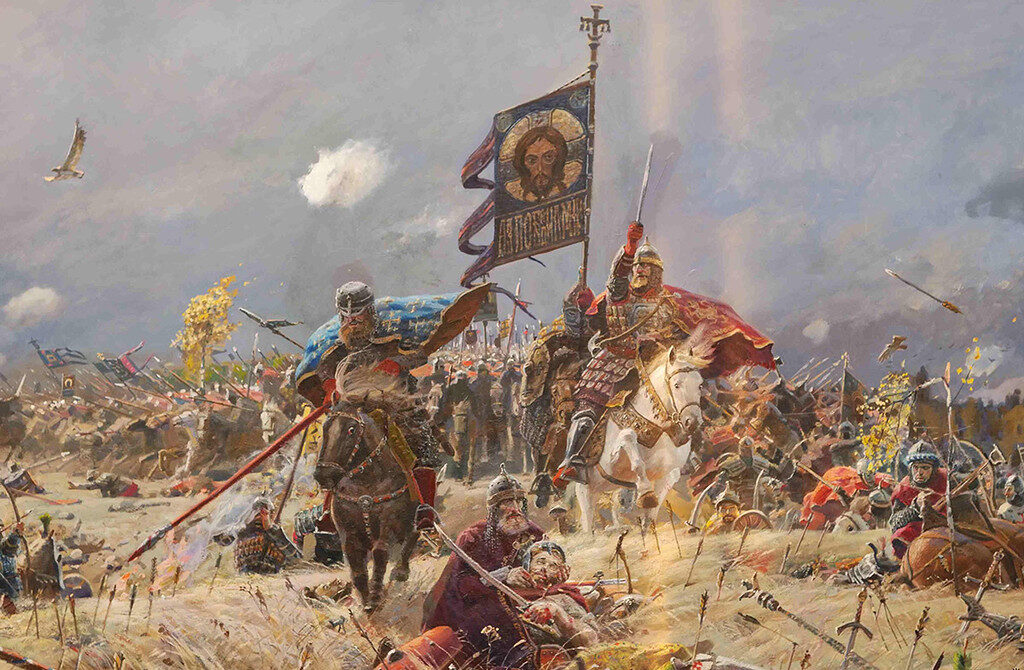
Photo Source: World History
The next spring spawned the start of another seven more invasions into Georgia that lasted until 1402:
- #2 1987 Timur returned to exact revenge on Georgia for their King’s treachery. Co-Rulers Bagrat V and his son Giorgi VII evacuated much of the civilian population into the mountainous areas before making plans to fortify their cities as much as they could. Khan Tokhtamysh made a counter assault into Iran and forced Timur to hold off his plans with Georgia.
- #3 1394 Timur sends in four generals to raid Samtskhe following the Islamic code of Ghaza, authorizing the pillaging of infidel lands. Timur himself invaded the mountainous regions of the Pshavs and Khevsurs who were known as the “Black Bucklers” before having to return Iran to fight yet another Tokhtamysh invasion.
- #4 1395 Georgian forces allied with Sidi Ali of Shekki defended against Timur’s son and eventually capturing him.
- #5 1399 Timur returned to take him back, decimating Sheki and Kakheti as retribution but was unsuccessful in retrieving his son.
- #6 1400 Furious, he moved on to Tbilisi and flushed Georgi VII out of his citadel, laying waste to the city in the Spring of 1400. He then followed him into Gori and later Georgia’s thick western forests which finally Timur’s army could not penetrate. In a fit of rage he turned his fury onto the country itself. Burning every city, town, and village he came to: Liting crops, razing churches and monasteries, and placing upon his sword every Georgian soldier he possibly could. He left the kingdom smouldering with 60,000 captives trailing behind him. Those who did not die by his hand or taken captive were left to starve and wither away by disease.
- #7 1401 The next year Timur had worries about the Turkomans to the West. Giorgi VII sued for peace by sending his brother, Constantine to present him with offerings. Timur accepted but demanded Georgia supply troops and give muslims VIP status in his kingdom. Along the way Timur “liberated” the citadel in Tortum in Eastern Turkey (part of Georgia’s Kingdom) razing it and looting the surrounding area.
- #8 1402 Timur wasn’t happy that Giorgi VII had not congratulated on his victorious Turkoman campaign. He rejected Giorgi VII’s gifts of appeasement and summoned him in person. Giorgi VII did not aqueous and so Timur razed the “impregnable” fortress of Birtvisi in 1403 and then set out to plunder and clear every Georgian settlement (700) while pursuing the king to Abkhazia. Muslim leaders pointed out that King Giorgi qualified for clemency and Timur gave it to him after Giorgi VII provided 1000 tankas of gold struck in the name of Timur (~$440,000 USD worth today), 1000 horses, and a ruby weighing 18 mithqals (76.5g ~ 382.5ct ~ $4,660,000 USD).
This ended Timur’s campaigns against Georgia. He didn’t succeed in implementing total jihad nor making her a doting vassal but wreaked massive destruction upon her lands that left her crippled and morality wounded.
Your Safe Place
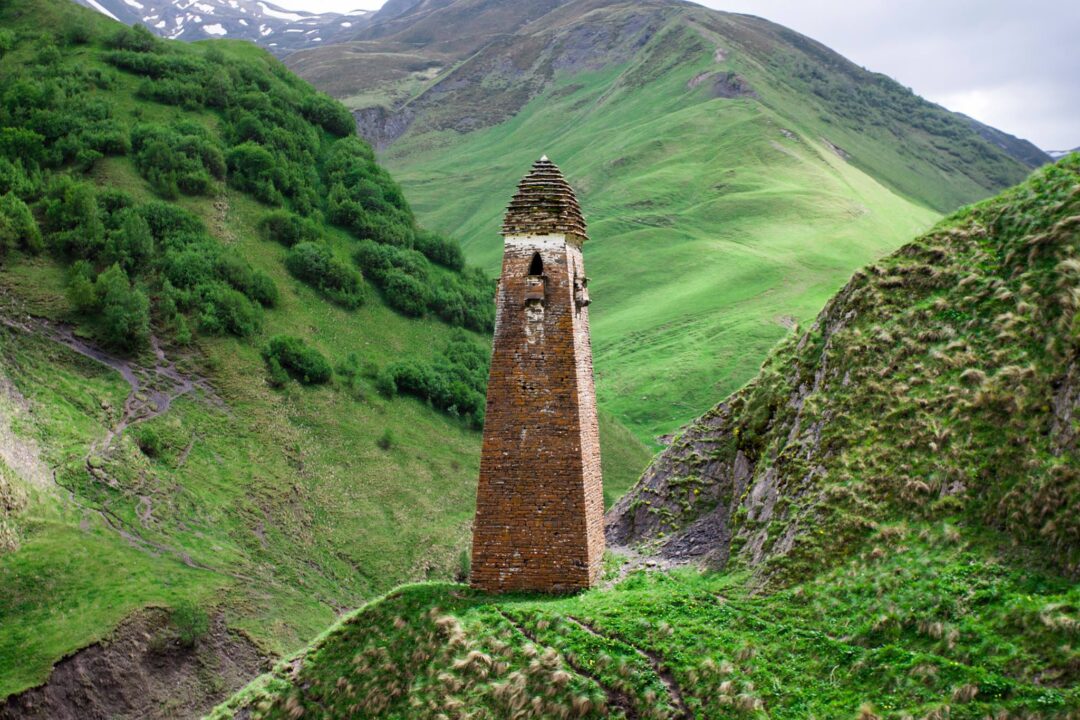
Photo Source: National Parks
The first thing that everyone notices when they enter the mountain regions of Georgia are the many tiny obelisk-like towers that fill the villages. Poking up like huge smoke stacks from behind tiny villas are these strong-towers, known simply as a koshki, or “towers”. These were places of quick refuge when invaders were sighted approaching town. Made of heavy rock bricks, they were nearly impenetrable and doubled as a storage silo in times of peace. Stocked with food and probably wine, a family or community could hold-up for weeks or months while their interlopers scoured the area for whatever they could find. With little left for them and the harsh climate of the mountains, their invaders would soon grow weary of the place and move on. Koshkis provided a safe, reliable stability in a country that greatly lacked it.
Often people would send their families up into the mountain regions with icons and heirlooms to be kept safe when an invasion or war was pending. Many of these items are probably still there today, moldering in the hands of ancestors that have no idea their true age, history, or worth. The koskis were pivotal in preserving a people and a culture that was often at odds with its occupiers.
A Welcome Mat
King Constantine I was not the most pleasant person to be around. He was brash, arrogant and conniving. He was never at ease with his brother Georgi VII’s assent to the throne and actively attempted to undermine his regime. Just prior to Timur’s eighth invasion Constantine brought gifts of his own to present instead of representing his brother as he had done prior to the emperor’s Turkish campaign when Giorgi tried to sue for peace. Eventually he brother died without an heir and Constantine I became united Georgia. Shortly thereafter Emperor Tamerlane also passed and it seemed like things were going to go well for Constantine’s reign.
The Turks had other ideas and quickly pounced on the Ill Khanate’s lands, inevitably leading up to the Battle of Chalagan. Both sides fought hard and long but in the end the Turks won the fight and captured the king, his brother and 300 other nobles. Constantine, not being one for captivity said something to one of the generals that was so egregious that his head was removed for it, including his brother and the 300 attending nobels. His son Alexander I took over what was left of the kingdom but was unable to deal with all the damage done to his kingdom. He abdicated the throne to his three sons who tore what was left of the kingdom into piece
The Persian Khanate without Timur declined remarkably and much of their hegemony was overtaken by the Turks but only for a few decades as Safidic Iran emerged in the early 1500s. For about 400 years the Ottomans and the Persians would fight over the Georgian territories, continuing ages of collateral damage that left Georgia stripped and in litteral ruin. With such instability, the nation couldn’t help but be fractured with Imereti tending towards the Turks and Kartli-Kakheti towards the Persians.
With christian Constantinople now muslim Istanbul, the Mongol Golden Horde to their north and the Persians to the south and east, Georgia was an isolated island of Christianity in a sea of Muhammadans. Constant pleas for help from European kingdoms were not regularly heard or acted upon. In 1714 a monk by the name of Sulkhan-Saba Orbeliani journeyed to Europe to directly beseech the kings of Europe, especially Louis XVI and the Holy See.
Sulkhan-Saba Orbeliani was a Georgian and Roman Catholic convert with an impressive CV. He was the personal tutor of King Vaktang VI. He built the nation’s first printing press and publishing house. He also developed Literary Georgian including its first dictionary and a book of fables titled Sibrdzne Sitsruisa.
Immensely humble and very well received, he gained attention and notoriety wherever he went. Nobles and kings would offer great feasts and receptions in his honor but in most cases he would refuse and insist on boarding in a nearby monastery. Relentlessly focused on promoting Georgia and the benefits of mutual cooperation against a common enemy, Sulkhan-Saba Orbeliani was able to score audiences with both Pope Clement VI and King Louis XVI but was unable to get any aid when it came time to actually utilizing it.
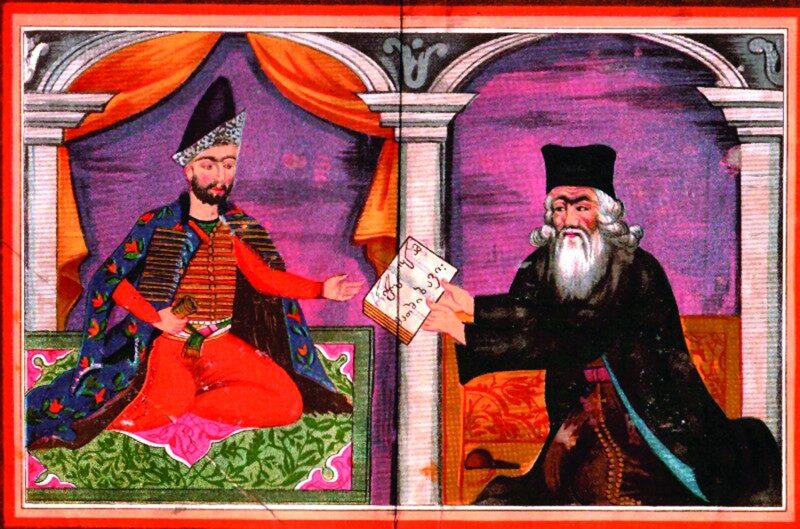
Photo Source: Georgian Journal
Sadly, Sulkhan-Saba Orbeliani’s diplomatic trip stands as its own fable in regards to the relationship between Georgia and the West. Often emissaries are well received, listened to, and given promises of help but when it comes down to actually providing the aid when the need comes few of those promises are ever carried through. This is seen all throughout Georgian history and as recently as their 2008 War with Russia.
The Vatican and France’s reticence to do more than provide words or condolences lead Sulkhan-Saba Orbeliani and King Vaktang straight onto the arms of Peter the Great of Russia who provided amnesty for many of the Georgian nobility. As the 1800s came on, that relationship grew to where Georgia and Russia seemed neatly inseparable. In our final piece we will look at that relationship closer and it’s breakup as we will end this series on Georgia’s Modern Era.
We created Memo — a brand where Georgian memories come to life.
Visit Memo By GSH and take a piece of Georgia with you – Www.memories.ge

